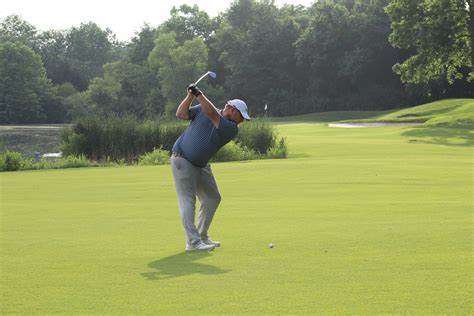How CPR Saved One Golfer’s Life
On July 30, 2013, Ralph Harms, 78, was out on the course with his son Joe and friend Doug Green. At the fourth hole, Ralph was excited. He shouted, “Yeah, baby!” after nailing a long putt.
However, three days later Harms awoke in the hospital. He had gone into cardiac arrest and did not recall anything until then.
He compared the event to suddenly switching off a light switch. He did not experience any signs that anything was wrong.
Ralph’s son, Joe, learned CPR from his father about 4 years earlier. At the time, the two men were watching football and saw an ad about getting CPR certified. To maintain his certification, the elderly Harms continued to maintain his endorsement every two years. Ralph remembered showing Joe how to perform chest compressions during a break in the game.
According to Ralph, it was good Joe remembered how to do the compressions, as he would never have been able to tell his tale of survival.
As Doug dialed 9-1-1 on his mobile phone, Joe performed CPR on his Dad. Ralph’s heart stopped three times while emergency personnel were on the way. Joe continued the chest compressions while he waited for help.
For the first three days of his recovery, Ralph was kept in in a drug-induced state of unconsciousness.
The knowledge and use of CPR were both critical to Ralph’s survival. Again, because of CPR, Ralph survived so he could tell people about his experience.
CPR saves lives and does not take a lot of time to learn. Moreover, you can glean this must-have skill easily anytime.
Besides saving lives, learning CPR and AED, in combo, prevents brain death and reduces recovery times. CPR is used when the heart stops beating during a cardiac arrest,
Brain death typically happens four to six minutes after the heart has stopped pumping. When CPR is performed, the brain and other vital organs get the oxygen they need to continue to operate.
Two minutes of cardiopulmonary resuscitation (CPR) increases a person’s chances of survival twofold. The longer a patient goes untreated the greater the physical toll it takes.
While you don’t have to get formal training in CPR, it still is better to have it. In the event of an emergency, phone 9-1-1 immediately.
If a bystander is present, start CPR while he or she calls 9-1-1 and looks for an automatic external defibrillator (AED). This will save you valuable time. Defibrillators (AEDs) are devices that shock the heart and restart it.
Aim to do 100 to 120 pushes each minute in the middle of the chest. The American Heart Association (AHA) recommends that you time the compressions. Hands-only CPR is an alternative to mouth-to-mouth CPR, and does not require breathing into the mouth of the victim.
Continue giving CPR until medical help arrives.
When the heart stops beating abruptly and unexpectedly, it is called a sudden cardiac arrest (SCA). If this occurs, essential organs, such as the brain and heart, are deprived of their blood and oxygen supply. If SCA isn’t treated within minutes, it frequently results in death.
An understanding of the heart’s mechanisms helps in defining SCA. The heart’s electrical system regulates the heartbeat’s pace and rhythm. Therefore, the heart’s circuitry, when it malfunctions, leads to an arrhythmia or irregular heartbeat.
Arrhythmias come in various forms. As a result, the heart may beat too fast or too slow. In some cases, it may beat erratically. Arrhythmias that prevent the heart from pumping blood to the body trigger an SCA.
It is important to distinguish between an SCA and a heart attack. A heart attack happens when blood flow to a portion of the heart is disrupted. The heart normally doesn’t stop beating immediately during a heart attack. Even after a heart attack, an SCA may still occur during recovery.
An SCA may also strike healthy individuals with no history of heart disease or another predisposing condition. Therefore, don’t discount the importance of CPR and AED training. With the knowledge you receive, you might very well end up saving the life of someone you love.



